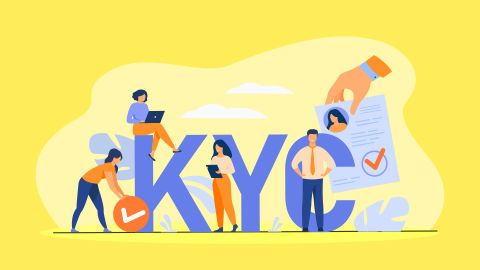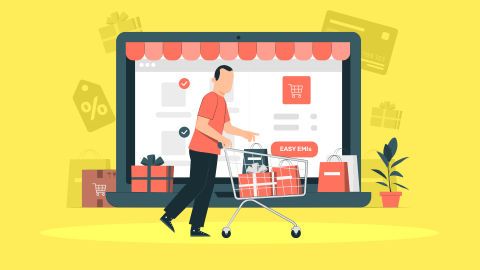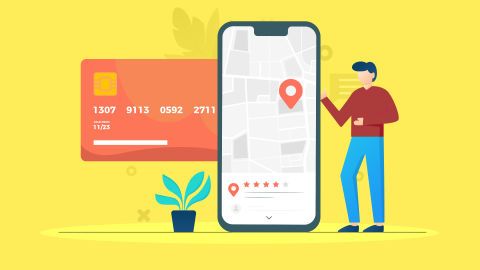Both iPads and tablets offer portable computing, but they differ in operating systems, app availability, performance, and price. Whether you need a device for work, entertainment, or education, understanding these differences will help you make the right choice.
This article will explore the key distinctions between iPads and tablets, examining their strengths, weaknesses, and ideal use cases. We will also explain how you can purchase either option using the Bajaj Finserv Insta EMI Card, making your dream device more affordable through convenient EMI payments.
What is an iPad?
An iPad is a specific type of tablet manufactured exclusively by Apple. It runs on iPadOS, which is Apple's tablet-specific operating system designed for touch interfaces. The iPad offers a premium experience with high-quality displays, powerful processors, and access to Apple's carefully curated App Store.
iPads come in several variants including the standard iPad, iPad Air, iPad Pro, and iPad Mini. Each model targets different user requirements and budgets, from casual browsing to professional-grade creative work. The tight integration between Apple hardware and software results in smooth performance and long-term software support.
What is a tablet?
A tablet is a portable computing device with a touchscreen display that serves as the primary input method. Unlike iPads that come only from Apple, tablets are produced by numerous manufacturers including Samsung, Lenovo, Xiaomi, and many others. Most non-Apple tablets run on Android operating system, while some use Windows.
Tablets range widely in specifications, build quality, and price points. They typically offer flexibility in terms of storage expansion, customisation options, and connectivity with various ecosystems. Tablets are designed for similar functions as iPads — web browsing, media consumption, gaming, and productivity tasks.
Key differences between iPad and tablet
| Feature | iPad | Other tablets |
| Operating system | iPadOS (Apple's exclusive system) | Android or Windows |
| Manufacturer | Only Apple | Multiple companies (Samsung, Lenovo, etc.) |
| App marketplace | Apple App Store | Google Play Store or Microsoft Store |
| Price range | Generally higher starting price | Available across all price segments |
| Build quality | Consistent premium construction | Varies from budget to premium |
| Processor | Apple A-series or M-series chips | Various chipsets (Snapdragon, MediaTek, etc.) |
| Software updates | Longer support period (5+ years) | Typically shorter update cycles (2-3 years) |
| Storage expansion | No microSD card support | Often includes expandable storage |
iPad strengths
- Superior ecosystem integration: iPads work seamlessly with other Apple devices through features like AirDrop, Handoff, and iCloud synchronisation.
- Optimised applications: Many apps are specifically designed for iPad screens and capabilities, resulting in better user experiences.
- Consistent performance: The combination of Apple hardware and software creates reliable performance even in older models.
- Premium build quality: iPads feature high-quality materials and construction techniques that contribute to their durability and premium feel.
- Professional creative tools: iPad Pro models with Apple Pencil support excel for artists, designers, and creative professionals with exclusive apps like Procreate
- Higher price point: iPads typically cost more than comparable Android tablets with similar specifications.
- Limited customisation: Apple restricts certain aspects of customisation to maintain consistent user experience.
- No expandable storage: Users must purchase models with sufficient built-in storage as iPads lack microSD card slots.
- Expensive accessories: Official accessories like Apple Pencil and Magic Keyboard add significant costs to the overall investment.
- Closed ecosystem: iPads work best within Apple's ecosystem, potentially limiting compatibility with non-Apple devices.
- Affordability options: Android tablets come in various price ranges, including budget-friendly options with decent specifications.
- Greater hardware variety: Users can choose from different screen sizes, designs, and feature sets from multiple manufacturers.
- Expandable storage: Many Android tablets support microSD cards for inexpensive storage expansion.
- Customisation freedom: Android offers more personalisation options including widgets, launchers, and default applications.
- USB connectivity: Most Android tablets use standard USB connections, making it easier to connect external devices.
- Inconsistent performance: Quality varies significantly between manufacturers and models.
- Fragmented software updates: Many tablets receive updates for only 2-3 years, with some budget models receiving even fewer.
- Less optimised applications: Some Android apps are not fully optimised for tablet screens.
- Variable build quality: Construction quality ranges widely from flimsy plastic to premium metal designs.
- Potential security concerns: The open nature of Android can expose users to more security risks compared to iPadOS
| Device type | Pros | Cons |
| iPad | Consistent premium experienceExcellent app optimisationStrong performanceLong-term software supportHigh resale value | Higher initial investmentLimited customisationNo expandable storageExpensive accessoriesWorks best within Apple ecosystem |
| Android tablet | Wider price range optionsGreater hardware varietyExpandable storageMore customisation freedomUniversal USB connectivity | Variable performanceShorter software supportLess optimised tablet appsInconsistent qualityLower resale value |
Which one should you choose?
Your choice between an iPad and an Android tablet should depend on your specific needs, preferences, and budget. Choose an iPad if you value premium build quality, optimised apps, and long-term performance. iPads work exceptionally well if you already use other Apple products.
Select an Android tablet if you prefer affordability, customisation options, and hardware variety. Android tablets offer more flexibility and might better suit your needs if you use other Android or Windows devices. To make your purchase more affordable, check your pre-approved offer for a Bajaj Finserv Insta EMI Card. You may already be eligible—find out by entering your mobile number and completing OTP verification.
How to buy iPad and tablet online with Insta EMI Card
The Bajaj Finserv Insta EMI Card makes purchasing your preferred tablet much more affordable by converting the full price into easy monthly instalments. Here is how you can use this convenient payment option:
- Visit any major e-commerce platform like Amazon, Flipkart, or the official Apple website
- Select your preferred iPad or tablet model and add it to your cart
- Proceed to checkout and select the EMI payment option
- Choose Bajaj Finserv as your EMI provider
- Enter your Insta EMI Card details and select your preferred repayment tenure (1-60 months)
- Complete the transaction with OTP verification
Alternatively, you could try the offline application process:
- Visit any Bajaj Finserv partner store that sells tablets and iPads
- Select your preferred device model
- Inform the sales representative that you wish to use your Bajaj Finserv Insta EMI Card
- Provide your card details and select a suitable repayment tenure
- Complete the verification process to finalise your purchase
To apply for the Insta EMI Card, you must meet these requirements:
- Be an Indian citizen between 21 and 65 years of age
- Have a regular source of income
- Maintain a good credit score according to Bajaj Finserv risk policies
- Required documents include:
- PAN card
- Aadhaar card
- Address proof
- Bank account details with IFSC code for e-mandate registration
The difference between iPad and tablet options ultimately comes down to your personal requirements and ecosystem preferences. iPads offer premium build quality, optimised software, and excellent longevity, while Android tablets provide affordability, customisation, and hardware variety.
Whichever device you choose, the Bajaj Finserv Insta EMI Card makes ownership easier through convenient monthly payments. Apply today and enjoy a pre-qualified card loan offer amount of up to Rs. 3 lakh with minimal interest charges. Check your eligibility now—you may be already pre-approved for this beneficial financial tool. Simply enter your mobile number and complete OTP verification to discover your offer.
Make the smart choice—get the tablet that fits your needs and the payment plan that fits your budget!
Biggest upcoming sale in India in 2025
Top platforms to buy products with Bajaj Insta EMI Card
Check more




